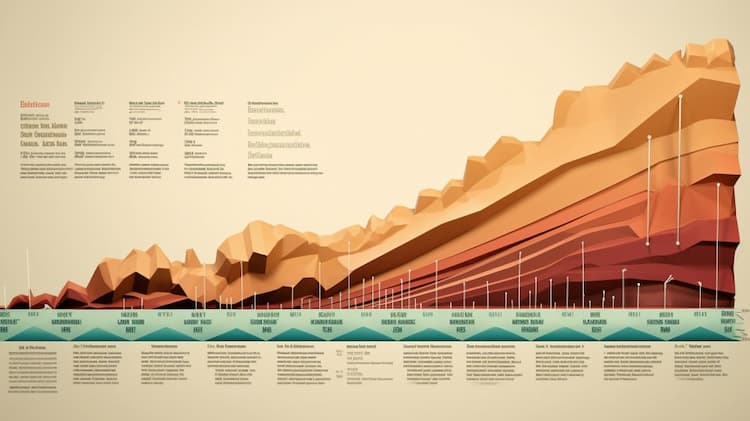
TLT VS VGLT: A Comparison of ETFs
Both TLT and VGLT provide investors with exposure to the U.S. Treasury market, specifically focusing on longer-maturity bonds. Explore this article.
The Vanguard Long-Term Treasury ETF (VGLT) is managed by Vanguard Group, a renowned name in the investment industry known for its low-cost, passive investment strategies. VGLT seeks to replicate the performance of the Bloomberg U.S. Long Treasury Index, which consists of U.S. Treasury bonds with maturities exceeding 10 years. Vanguard employs a sampling approach to mimic the index, ensuring that at least 80% of the fund's assets are invested in bonds included in the benchmark. With a commitment to providing investors with cost-effective exposure to long-term U.S. Treasury securities, Vanguard has established a reputation for delivering value to its clients.
The Vanguard Long-Term Treasury ETF (VGLT) follows a passive management approach, seeking to replicate the total return performance of the Bloomberg Barclays U.S. Long Treasury Bond Index before fees and expenses. VGLT's investment strategy primarily involves investing at least 80% of its total assets in component securities of the Index, which consists of long-term U.S. Treasury bonds. As a result of this focus on government bonds, VGLT's dividend distribution primarily comes in the form of interest payments from these bonds. The ETF's dividend eligibility is determined by the interest payments generated by the underlying U.S. Treasury securities, which are generally considered to be highly reliable and consistent. Investors in VGLT can expect regular dividend distributions based on the yields of these long-term Treasury bonds, making it a suitable choice for those seeking stable income through bond investments.
Vanguard Long-Term Treasury ETF (VGLT) employs an indexing investment approach designed to closely track the performance of the Bloomberg U.S. Long Treasury Index. This index includes fixed-income securities issued by the U.S. Treasury, with maturities greater than 10 years. VGLT utilizes a sampling strategy, holding a range of securities that collectively mirrors the key risk factors and characteristics of the full Index. As of August 31, 2022, the ETF maintains a dollar-weighted average maturity consistent with that of the Index, which was 23.4 years, ensuring investors seek exposure to long-term U.S. Treasury bonds can do so with confidence in VGLT's tracking capabilities.
The correlation aspect of the Vanguard Long-Term Treasury ETF (VGLT) is known for its strong positive correlation with long-term U.S. Treasury bonds. As VGLT seeks to track the Bloomberg U.S. Long Treasury Index, its correlation with this index is expected to be very high. Investors often turn to VGLT for exposure to long-term Treasury bonds, which can serve as a safe-haven asset during periods of market volatility or economic uncertainty. Analyzing VGLT's correlation with other fixed income and equity assets can provide insights into interest rate trends and overall market sentiment.
The Vanguard Long-Term Treasury ETF (VGLT) primarily focuses on the fixed income sector, specifically tracking the Bloomberg U.S. Long Treasury Index. This index includes long-term U.S. Treasury bonds with maturities greater than 10 years. VGLT achieves its investment objectives by holding a diversified range of these bonds, with at least 80% of its assets invested in bonds included in the index. As of August 31, 2022, the fund maintained a dollar-weighted average maturity consistent with that of the index, which was 23.4 years, making it a suitable choice for investors seeking stability and income in their portfolio.
The Vanguard Long-Term Treasury ETF (VGLT) is primarily focused on tracking the performance of the Bloomberg U.S. Long Treasury Index. This index consists of fixed income securities issued by the U.S. Treasury with maturities exceeding 10 years, excluding inflation-protected bonds and certain other security types. VGLT employs a sampling strategy to approximate the index's risk factors and characteristics, with at least 80% of its assets invested in bonds included in the Index. This ETF allows investors to gain exposure to the long-term U.S. Treasury market, providing a conservative investment option within the fixed income space.For comprehensive exposure analysis, investors can leverage the ETF Insider web app, which offers detailed insights into various U.S. ETFs. The tool provides a user-friendly visualization of exposure data, helping investors uncover correlations, overlaps, and other critical information, aiding in informed investment decisions.

ETF Insider is a data-driven portfolio analytics and optimization platform that introduces a more efficient and practical way to visualize, analyze and optimize portfolios.
Rather than focusing on the surface-level attributes of ETFs and Mutual Funds, ETF Insider goes deeper by examining the underlying holdings of exchange traded products.
By organizing and structuring that data, investors can easily navigate within their overlapping layers.
This innovative perspective combined with modern data visualization and modeling tools, provides an entirely new approach to portfolio optimization that can quickly expose both portfolio inefficiencies and opportunities.

Both TLT and VGLT provide investors with exposure to the U.S. Treasury market, specifically focusing on longer-maturity bonds. Explore this article.

The VGLT ETF, or Vanguard Long-Term Government Bond ETF, is an investment fund that focuses on providing investors with exposure to long-term U.S. government bonds. This ETF offers a low-cost and efficient way to invest in long-term government debt, making it an attractive option for those seeking a stable and conservative addition to their investment portfolio.

The WBIT ETF is a specialized investment fund that focuses on global companies in the relevant sectors. This exchange-traded fund offers investors exposure to a diverse range of innovative and cutting-edge companies engaged in advancements in the industry. Discover the potential growth opportunities and risks associated with investing in this dynamic sector through the WBIT ETF.
ETF Insider is a novel portfolio optimization tool that uses the power of data visualization to gain insight into portfolio compositions, concentration risks, portfolio efficiency and more. Complex financial data can be transformed into visually appealing and easily digestible graphs and charts, allowing investors to quickly identify trends and make well-informed investment decisions. Not only does this save time, but it also increases the accuracy and effectiveness of portfolio management.